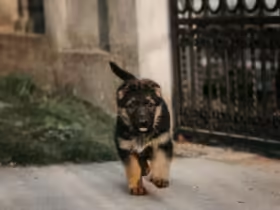The Shih Tzu, with its luxurious coat and adorable face, is a breed that captures hearts worldwide. Known for its friendly and outgoing personality, the Shih Tzu makes a wonderful companion for families and individuals alike. In this comprehensive guide, we’ll explore the Shih Tzu’s history, physical characteristics, temperament, care needs, and more.
1. History of the Shih Tzu
Origins and Historical Significance
The Shih Tzu is a toy breed with ancient origins that date back to the Tang Dynasty in China (618-907 AD). The breed’s name, “Shih Tzu,” translates to “Lion Dog” in Mandarin, reflecting its resemblance to the lion statues found in Chinese temples.
- Imperial Companions: Shih Tzus were favored by Chinese royalty, particularly during the Ming and Qing Dynasties. They were bred as lap dogs for Chinese emperors and were often seen in the palaces of the Forbidden City.
- Western Recognition: The breed was introduced to the Western world in the early 20th century and was officially recognized by the American Kennel Club (AKC) in 1969.
2. Physical Characteristics
Size and Build
- Height: Shih Tzus are small dogs, typically standing between 9 to 10.5 inches (23-27 cm) tall at the shoulder.
- Weight: Their weight ranges from 9 to 16 pounds (4-7 kg). Males and females are generally similar in size.
Coat and Color
- Coat: The Shih Tzu is renowned for its long, flowing double coat. The outer coat is straight and dense, while the undercoat is soft and fluffy.
- Colors: Shih Tzus come in a variety of colors, including white, black, gray, gold, and combinations of these. They can also have patterns like brindle or markings.
Facial Features
- Head: The Shih Tzu has a distinctive round head with a short, flat face. Its large, dark eyes and pushed-in nose give it a sweet and expressive look.
- Ears and Tail: The breed’s ears are long and covered in hair, often styled to frame the face. Their tail is curled over the back, adding to their distinctive appearance.
3. Temperament and Behavior
Personality Traits
- Friendly and Sociable: Shih Tzus are known for their friendly and outgoing nature. They get along well with children, other dogs, and even strangers.
- Affectionate: They are very affectionate and enjoy being close to their owners. They thrive on attention and are often seen following their owners around the house.
- Alert but Not Aggressive: While they are alert and make good watchdogs, Shih Tzus are not typically aggressive. They are more likely to bark to alert you of a visitor than to act defensively.
Training and Socialization
- Training: Shih Tzus are intelligent but can be somewhat stubborn. Consistent, positive reinforcement methods work best for training. Short, engaging training sessions help keep their attention.
- Socialization: Early socialization is important to help them adapt to different environments and interactions. Exposure to various people, pets, and situations helps them grow into well-rounded adults.
4. Health and Lifespan
Common Health Issues
- Brachycephalic Issues: Due to their flat face, Shih Tzus may suffer from brachycephalic obstructive airway syndrome (BOAS), which can affect their breathing.
- Eye Problems: They are prone to eye conditions such as cataracts and corneal ulcers. Regular eye checks are advisable.
- Dental Health: The breed can also experience dental issues, so regular dental care is important.
Lifespan and Care
- Lifespan: Shih Tzus typically live between 10 to 16 years, depending on their health and care.
- Routine Care: Regular veterinary check-ups, a balanced diet, and proper grooming contribute to their overall well-being.
5. Grooming and Maintenance
Coat Care
- Brushing: Daily brushing is essential to prevent matting and tangles in their long coat.
- Bathing: Shih Tzus should be bathed regularly to keep their coat clean and healthy. Use a mild dog shampoo to avoid irritating their skin.
- Trimming: Regular trimming of the coat and hair around the eyes and ears helps maintain their appearance and prevent infections.
Additional Grooming Needs
- Nail Trimming: Regular nail trimming is necessary to prevent overgrowth and discomfort.
- Ear Cleaning: Check and clean their ears regularly to avoid infections.
- Dental Care: Brush their teeth regularly and provide dental chews or toys to support oral health.
6. Exercise and Nutrition
Exercise Requirements
- Moderate Exercise: Shih Tzus need moderate exercise to stay healthy. Short walks and playtime are usually sufficient for this breed.
- Indoor Play: They are generally content with indoor play but enjoy exploring new environments and engaging in interactive activities.
Diet and Nutrition
- Balanced Diet: Feed your Shih Tzu a high-quality dog food that meets their nutritional needs. Avoid overfeeding, as this breed can be prone to obesity.
- Portion Control: Monitor their weight and adjust their food portions accordingly to maintain a healthy weight.
7. Choosing a Shih Tzu
Finding a Reputable Breeder
- Research: Look for breeders who are known for their ethical practices and commitment to the health of their dogs. A reputable breeder will provide health clearances and a clean, loving environment for their dogs.
- Visit: If possible, visit the breeder to see the puppies and their living conditions before making a decision.
Adoption Options
- Rescues and Shelters: Consider adopting from a rescue organization or shelter. Many Shih Tzus in need of homes are waiting for loving families.
Conclusion
The Shih Tzu is a delightful breed that brings joy and companionship to many households. With its charming appearance and affectionate nature, it’s no wonder this breed remains popular. By understanding their history, characteristics, and care needs, you can provide the best environment for your Shih Tzu and enjoy a rewarding relationship with your furry friend.











Leave a Reply